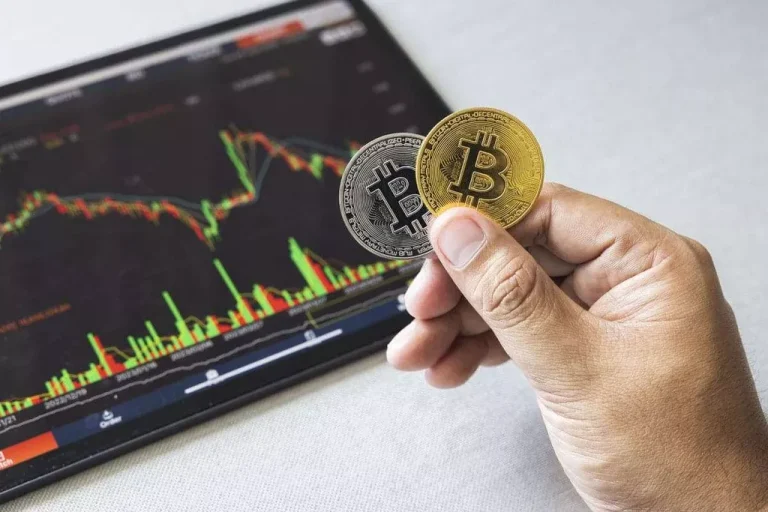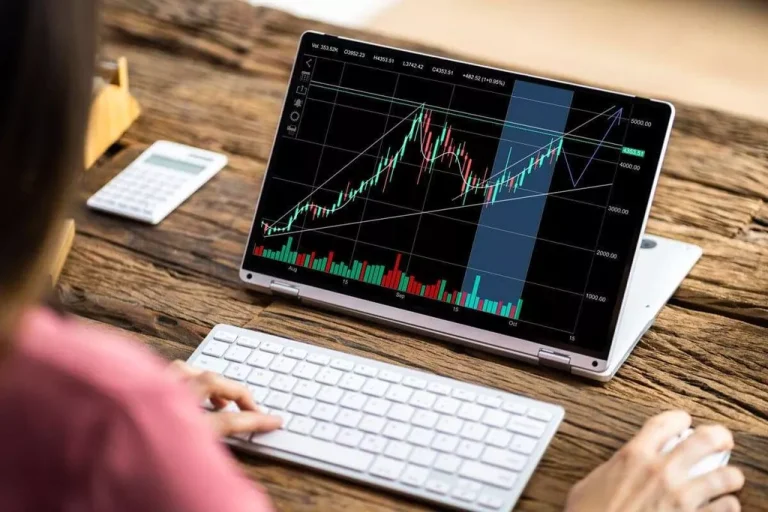This tokenization of real-world belongings (RWAs) isn’t simply occurring in artwork, but in bonds, cars, gold, houses and extra. It’s a concept that’s gaining momentum and curiosity from traditional finance gamers. We conclude by reflecting on the importance of real-world asset tokenization and its capability to revolutionize monetary landscapes. Emphasizing the pivotal role of professional companions like Blaize, we underscore the transformative potential of this know-how and the bright future it portends for those who embark on the tokenization journey. Tokenization will more and more integrate with typical monetary systems, enabling a seamless transition between digital and fiat currencies.
This institutional-grade blockchain goals to simplify and safe the method of bringing real-world property onto the blockchain, thereby fostering a extra environment friendly and transparent market. Its strategy combines the trustworthiness of private networks with the openness and transparency of public chains, guaranteeing a dependable ecosystem for all participants. Ondo Finance (ONDO) stands on the forefront of the Real World Asset (RWA) tokenization movement, offering innovative options that bridge traditional finance with decentralized finance (DeFi). It offers a platform for tokenizing real-world property, making them accessible and liquid on blockchain networks.
Knowledge Privacy And Security
It’s essential to note that the tokenization journey isn’t a winner takes all state of affairs, but rather an area the place the first mover often enjoys a considerable advantage. However, the collapse of undercollateralized algorithmic stablecoin TerraUSD showcased the problem and danger of straying from the tried-and-true USD-collateralized stablecoin mannequin. Other decentralized (overcollateralized) stablecoins, similar to MakerDAO’s DAI, have begun to incorporate different USD-collateralized stablecoins and real-world belongings (RWAs) as collateral in order to preserve a $1 peg at scale. Chainlink provides asset issuers and DeFi protocols with the info, compute, and cross-chain services needed to assist the adoption of LSTs and LRTs. While RWAs offer the DeFi sector a chance to be extra versatile, their integration into DeFi introduces regulatory challenges, which require a sturdy mechanism to safe asset-backed tokens and assure their safety. MakerDAO is a decentralized autonomous group (DAO) that enables customers to borrow and lend cryptocurrencies.

However, widespread adoption of real-world asset tokenization faces challenges, particularly in navigating the regulatory panorama, which varies across jurisdictions. Collaboration among stakeholders corresponding to financial institutions, technology suppliers, and regulators will be pivotal in making a conducive surroundings for the adoption of tokenized belongings. The tokenization of real property assets refers again to the process via which an actual estate property is fragmented into digital tokens utilizing blockchain technology, with each digital token representing a portion of the underlying property.
Here Are The Key Takeaways From This Text On Real-world Asset Tokenization:
Stablecoins provide a superior version of the dollar, one that is natively digital, programmable, composable, and atomically settled. More importantly, USD-collateralized stablecoins don’t require a continuing inflow of capital or speculation to sustain themselves. With direct redeemability and full collateralization, the availability of stablecoins can scale up and down as the market requires with out issue. This trade report supplies a complete overview of the rising real world assets crypto tokenization market, with contributions from BCG, 21Shares, Paxos, Backed, and Chainlink. Tokenized real-world property have been a rising phase of the DeFi ecosystem, with RWA whole worth locked sitting at ~$5B in December 2023, based on DefiLlama. In line with the Trust Project pointers, the educational content on this web site is obtainable in good faith and for common info functions solely.
Untangled Finance is a tokenized real-world asset (RWA) platform that recently went stay on the Celo network. It’s designed to facilitate the tokenization and trading of real-world assets in a decentralized and blockchain-based manner. Established in 2020, Untangled Finance introduced a $13.5 million funding round in October 2023. Fractional ownership is a revolutionary idea that has opened up new alternatives for small buyers to achieve publicity to high-value or exclusive assets. This progressive approach allows people with limited monetary sources to take part in investments that had been beforehand solely accessible to large companies or wealthy people. The power of public blockchains is that they will support and serve both tokenized RWAs and crypto-native property on the similar time.

Or, as another example, the actual estate market is sensitive to inner data disclosure and has already confronted lots of fraud and “data haunting threats”. Therefore the platform for real estate tokenization ought to have a cybersecurity staff able to handle any information breaches and security incidents.. By tokenizing property, issuers can supply a divisible, and infrequently more accessible, form of possession. This can decrease the barrier to entry for buyers, permitting for elevated liquidity and broader distribution of asset possession.
Untangled Finance
Most crypto-native readers would probably agree that it’s some variation of the latter. However, when wanting on the present state of crypto, it’s simple to see why it has a poor status amongst most people. Unbounded hypothesis reigns supreme, whereas tangible real-world use cases that benefit the common client have so far been few and much between.

By tokenising real-world assets, it turns into simpler to trade and switch possession of these belongings in a more environment friendly and cost-effective method. It is worth noting that RWAs have also been explored within the context of safety token choices (STOs), with 18 firms having raised a total of $380M in 2018. However, most STO offerings have historically been viewed as a limited implementation of RWAs given their concentrate on fundraising (i.e., an alternative to preliminary coin offerings or ICOs). With STOs representing more area of interest securities which might be often solely available on permissioned platforms, their adoption has not reached the same stage as RWAs on public blockchains. Participants included Australia and New Zealand Banking Group Limited (ANZ), BNP Paribas, BNY Mellon, Citi, Clearstream, Euroclear, Lloyds Banking Group, SIX Digital Exchange (SDX), and The Depository Trust & Clearing Corporation (DTCC).
What Is The Tokenization Of Actual Property Assets?
BeInCrypto prioritizes offering high-quality data, taking the time to research and create informative content for readers. While companions might reward the corporate with commissions for placements in articles, these commissions do not influence the unbiased, sincere, and helpful content material creation process. Any motion taken by the reader based on this info is strictly at their very own threat.

This integration not only amplifies Pendle’s utility within the DeFi house but additionally positions it as a pioneer in facilitating on-chain entry to tokenized traditional belongings like U.S. With this, Pendle provides an innovative platform for both retail and institutional traders, enabling them to manage and hedge yields of RWAs effectively. The protocol’s adaptability to incorporate RWAs underscores its potential to draw substantial institutional investments onto the blockchain, thereby expanding the DeFi landscape to include conventional financial products.
As digital-asset groups mature, we may even see tokenization more and more utilized in financial transactions. Tokenization is the process of creating a digital illustration of an asset via a blockchain-based token. The fast progress offers rise to the need for markets to be compliant and have a uniform method of addressing this progressive know-how. With different jurisdictional laws linked to RWAs globally, trading these assets may be an uphill task with the necessity for a standard regulation. This might improve their liquidity whereas helping corporations in complying with emission regulations and offsetting the needed emissions. By addressing these elements with specificity and clarity, the advantages of RWA tokenization are articulated in a manner that’s both accessible to those new to the idea and informative to seasoned business professionals.

That is why RWAs are all the time carefully linked with the issuance of proofs together with the asset – e.g. issuance of the on-chain certificate which confirms the asset origin and right to problem its tokenized version. It creates an additional task for blockchain engineers and legal representatives to create a suitable type of the on-chain illustration of the origin of ownership. Tokenization leverages blockchain’s inherent advantages such as immutability, transparency, and security to streamline the whole lifecycle of asset administration, thereby making previously illiquid assets accessible and tradable on a global scale. Tokens are then distributed to investors through non-public gross sales, auctions, or public offerings, relying on the regulatory framework. Post-distribution, these tokens may be listed on secondary markets – particularly those who deal with safety tokens – permitting for buying and selling and providing liquidity to token holders. In the sphere of economic innovation, the tokenization of real-world assets (RWAs) stands out as a transformative pressure, redefining the paradigms of asset management and funding.
The way ahead for real-world asset tokenization seems promising, marked by anticipated market enlargement and engaging prospects for buyers and enterprises. Overcoming regulatory obstacles, safeguarding security and privacy, and fostering collaboration shall be essential in driving widespread adoption and unlocking the entire potential of real-world asset tokenization. Embracing this innovative approach can usher in a new period of monetary opportunities for organizations.
In this Explainer, we’ll drill down into how tokenization works and what it might imply for the long run. Tokenized RWAs may help buyers build a extra sturdy, borderless, decentralized, and regulated investment portfolio. Explore our detailed case research for a deeper understanding of our methodical method and profitable implementations of RWA tokenization principles. Roland Berger can guide you thru each aspect – and unlock your organization’s full potential. Discover a complete framework to navigate security, governance, and compliance within the Web3 space. As we’ll see, these applied sciences come together to assist quite a lot of breakthroughs associated to tokenization.
In Web3 functions, the token is used on a (typically private) blockchain, which allows the token to be used within specific protocols. Tokens can symbolize property, including physical belongings like real estate or artwork, monetary assets like equities or bonds, intangible property like intellectual property, or even id and knowledge. Real-world asset tokenization offers quite a few advantages which would possibly be reshaping the financial panorama. One key benefit is enhanced liquidity, permitting historically illiquid assets like nice artwork and real estate to be traded on secondary markets.
Tokenization of Real World Assets – Forbes
Tokenization of Real World Assets.
Posted: Fri, 15 Mar 2024 07:00:00 GMT [source]
Starting in the Babylonian empire in 3000 BC with clay tablets to track money owed earlier than evolving into paper formats, finance has entered an nearly purely digital era. Despite these transformations, the recording of economic occasions still takes place throughout siloed ledgers that must be reconciled. This ends in important inefficiencies, corresponding to elevated costs and lengthened settlement occasions. The lack of interoperability and the ensuing fractionalized liquidity current a possibility for the subsequent period of finance to be around asset tokenization. Ultimately, the introduction and adoption of stablecoins within onchain finance has confirmed that there’s real appetite for tokenized RWAs.
